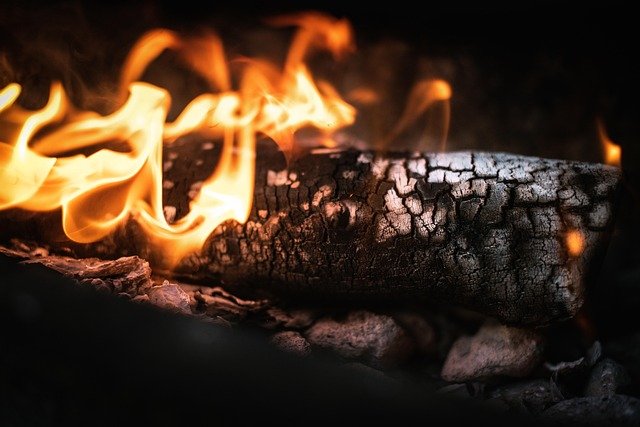The Warmth and Charm of Wood Burning Stoves: A Comprehensive Guide
Wood burning stoves have been a staple in homes for centuries, providing warmth, comfort, and a cozy ambiance. These versatile heating appliances offer an efficient and environmentally friendly alternative to traditional fireplaces and modern heating systems. In this article, we'll explore the benefits of wood burning stoves, their installation process, and how they compare to other heating options for your home.

The heat produced by a wood burning stove can warm a single room or, with proper design, an entire house. Many stoves also feature cooktops, allowing them to serve double duty as both a heating source and a cooking appliance. This versatility makes wood burning stoves particularly attractive for those seeking self-sufficiency or preparing for power outages.
What are the benefits of installing a wood burning stove?
Installing a wood burning stove in your home offers numerous advantages. First and foremost, these stoves provide excellent heat output, capable of warming large spaces efficiently. They’re particularly effective in areas with unreliable electricity or high energy costs, as wood is often a more affordable fuel source.
Wood burning stoves also contribute to a home’s ambiance, creating a focal point and adding a rustic charm that many find appealing. The crackling sound of burning wood and the soft glow of flames can create a cozy atmosphere that’s hard to replicate with other heating methods.
From an environmental perspective, wood is a renewable resource when harvested sustainably. Modern wood stoves are designed to burn cleanly and efficiently, producing fewer emissions than older models or open fireplaces. This makes them a more eco-friendly option for those concerned about their carbon footprint.
How does a wood burning stove compare to a traditional fireplace?
While both wood burning stoves and traditional fireplaces offer the charm of a real fire, stoves generally outperform fireplaces in several key areas. Wood stoves are significantly more efficient at converting fuel into usable heat. A typical open fireplace may lose up to 90% of its heat up the chimney, while a modern wood stove can achieve efficiency ratings of 70-80% or higher.
Wood burning stoves also provide better heat distribution throughout a space. Their design allows for more even heating, reducing cold spots that are common with traditional fireplaces. Additionally, stoves offer greater control over the burning process, allowing users to regulate heat output and fuel consumption more effectively.
In terms of safety, wood stoves are generally considered safer than open fireplaces. Their enclosed design reduces the risk of sparks or embers escaping into the room, and many models feature glass doors that allow you to enjoy the fire’s visual appeal while maintaining a protective barrier.
What should you consider when choosing a wood burning stove?
Selecting the right wood burning stove for your home involves several considerations. First, determine the size of the area you want to heat. Stoves are rated by their heat output, typically measured in BTUs (British Thermal Units). A professional can help you calculate the appropriate size based on your space and insulation levels.
Consider the stove’s efficiency rating and emissions levels. Look for EPA-certified stoves, which meet strict environmental standards. These models not only burn cleaner but also tend to be more efficient, saving you money on fuel costs in the long run.
Style is another important factor. Wood burning stoves come in a variety of designs, from traditional cast iron models to sleek, modern units. Choose a style that complements your home’s décor and meets your aesthetic preferences.
Finally, think about additional features you might want, such as a cooktop for cooking or a glass door for better fire viewing. Some stoves also offer blower systems to distribute heat more effectively throughout your home.
How much does it cost to install and maintain a wood burning stove?
The cost of installing and maintaining a wood burning stove can vary widely depending on several factors, including the stove model, installation requirements, and local labor rates. Here’s a general breakdown of costs to consider:
| Item | Cost Range |
|---|---|
| Wood Burning Stove | $500 - $5,000+ |
| Professional Installation | $1,000 - $4,000 |
| Chimney Installation/Upgrade | $1,000 - $5,000 |
| Annual Maintenance | $200 - $500 |
Prices, rates, or cost estimates mentioned in this article are based on the latest available information but may change over time. Independent research is advised before making financial decisions.
The initial investment in a wood burning stove can be significant, but many homeowners find that the long-term savings on heating costs offset the upfront expenses. Regular maintenance, including annual chimney sweeping and inspections, is crucial for safety and efficiency. While some maintenance tasks can be done by homeowners, it’s generally recommended to have a professional perform annual inspections and cleanings.
In conclusion, wood burning stoves offer a unique combination of efficiency, charm, and sustainability for home heating. While they require an initial investment and ongoing maintenance, many find the benefits of a wood stove—from reduced heating costs to the cozy ambiance they create—well worth the effort. By carefully considering your needs and options, you can choose a wood burning stove that will provide warmth and comfort to your home for years to come.






